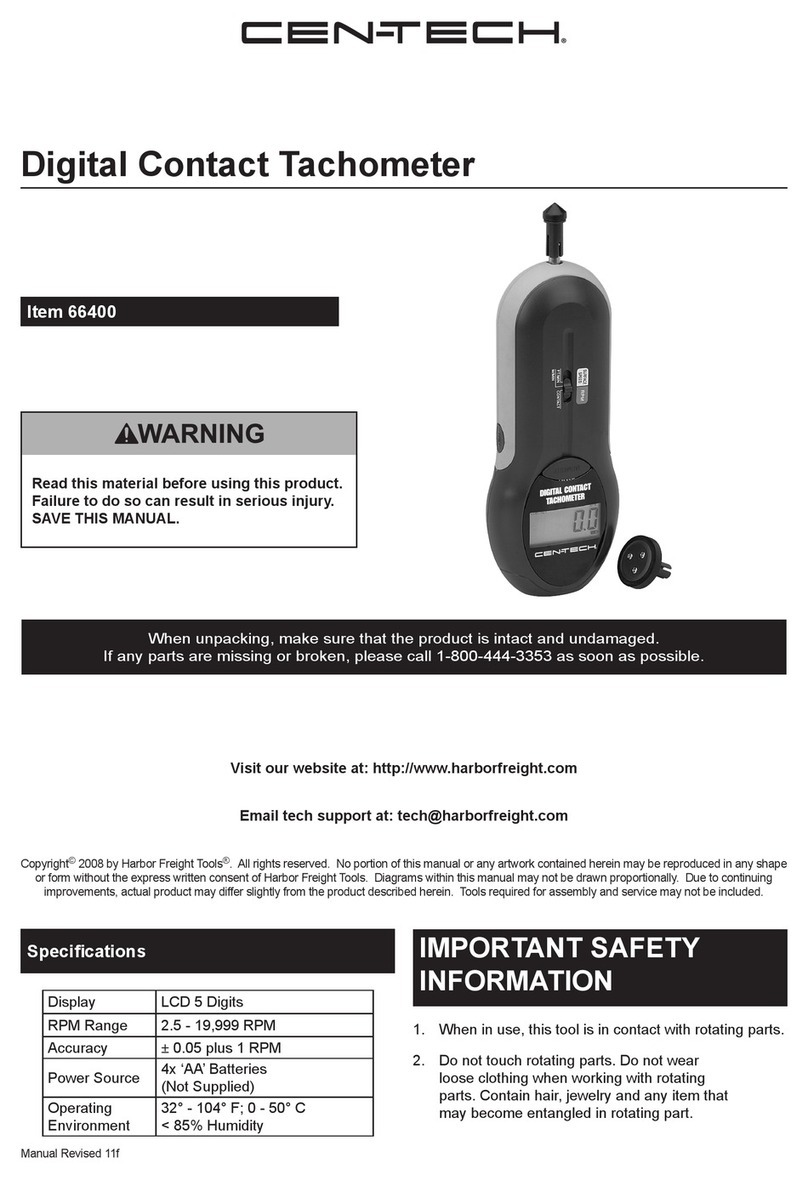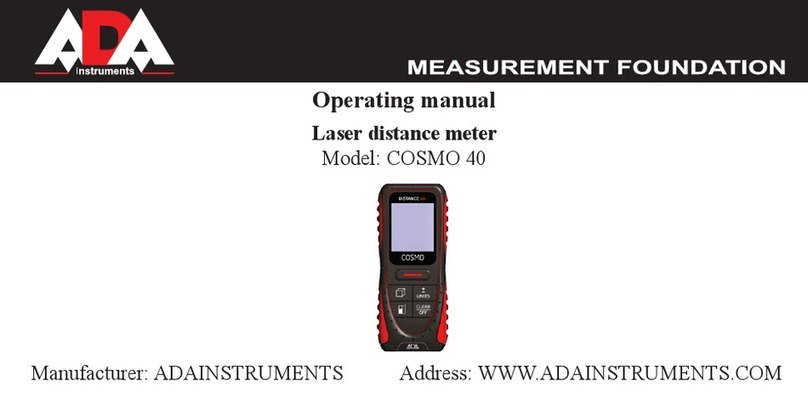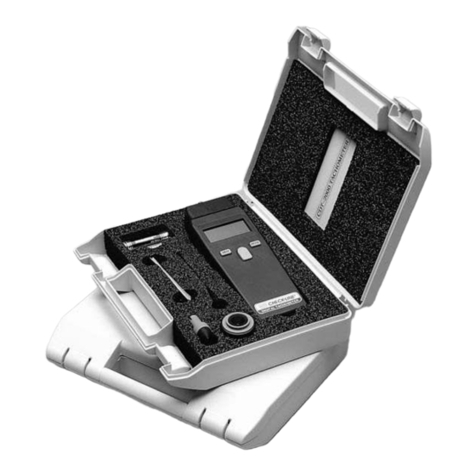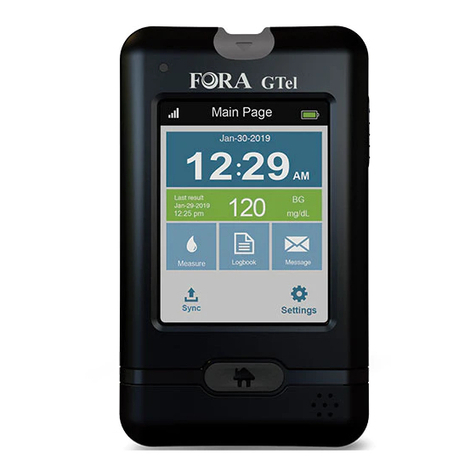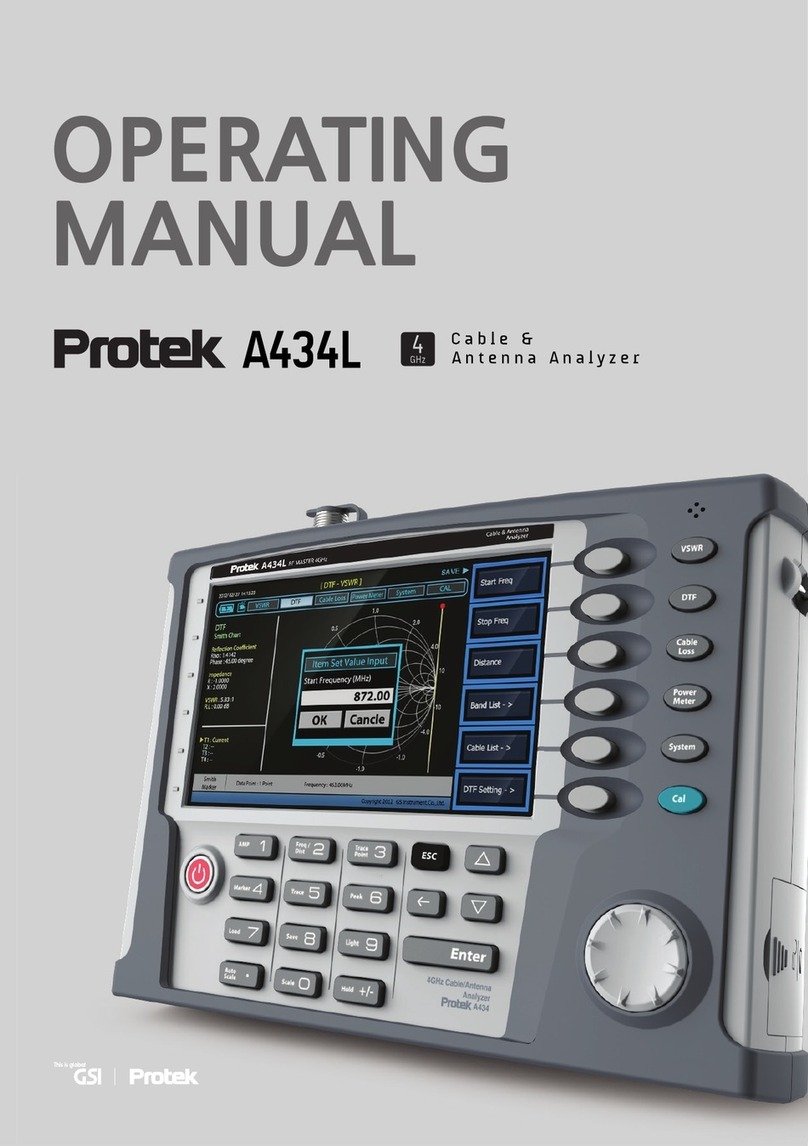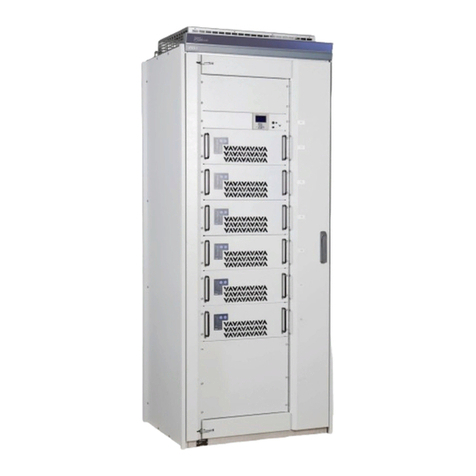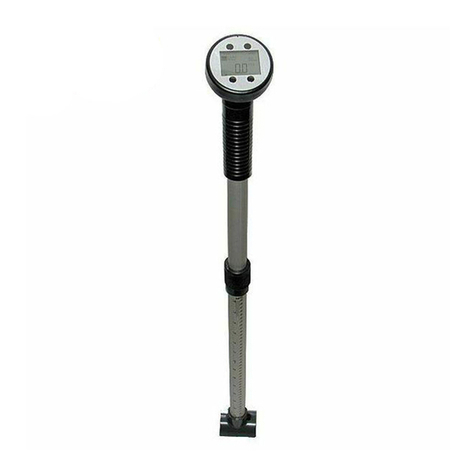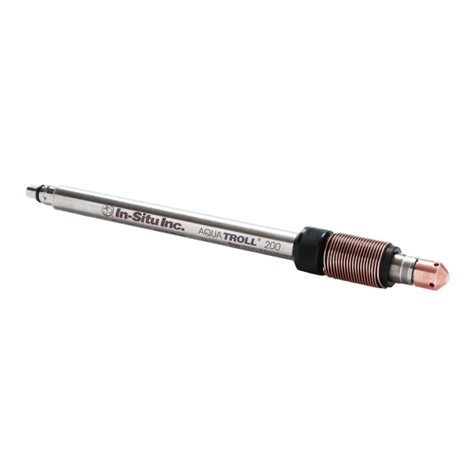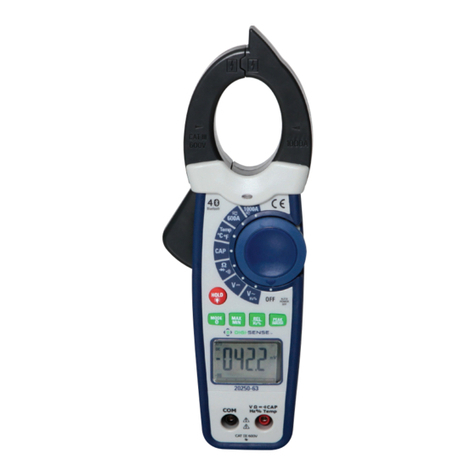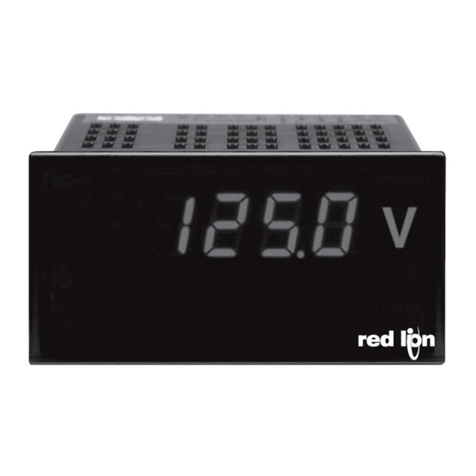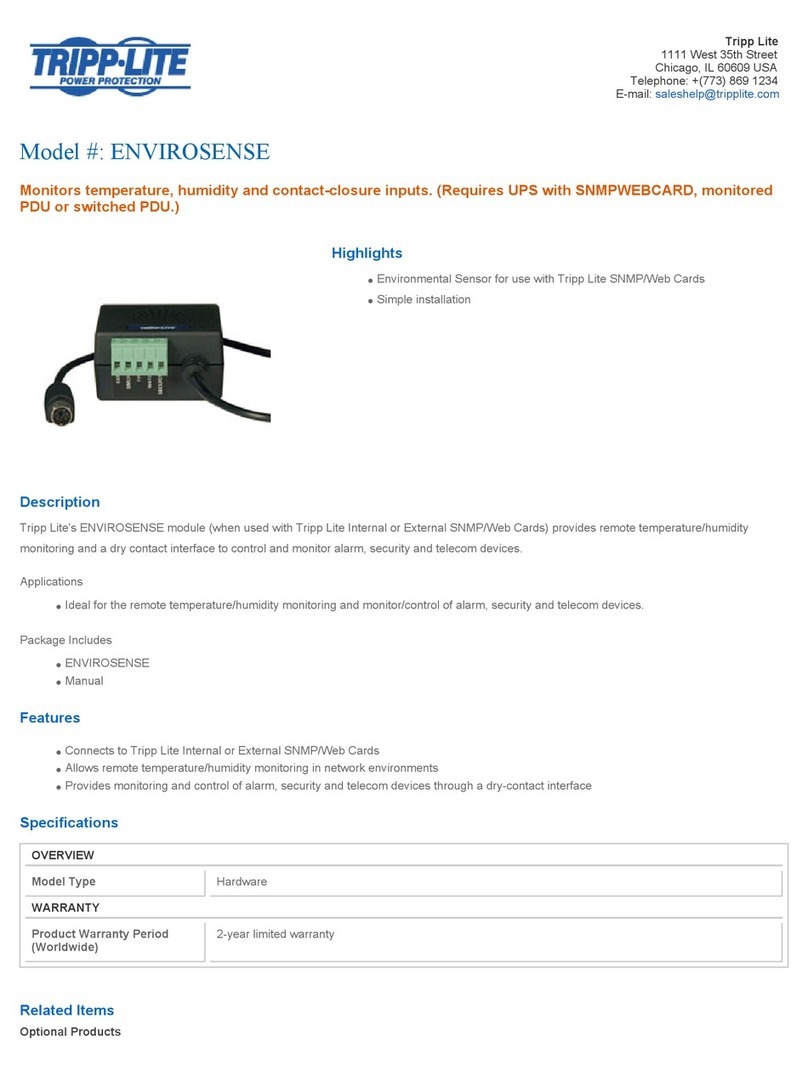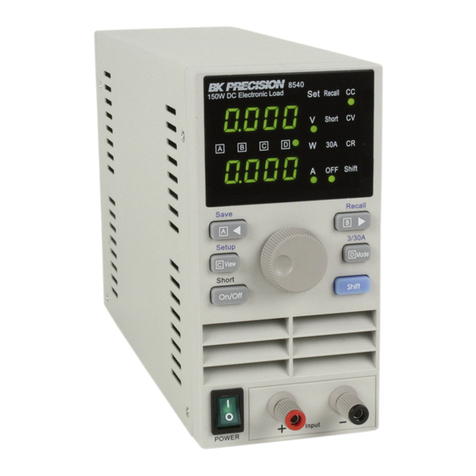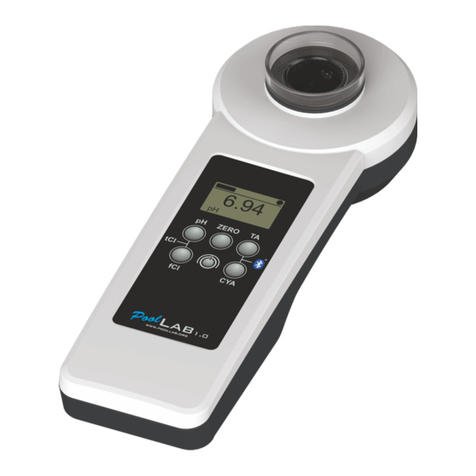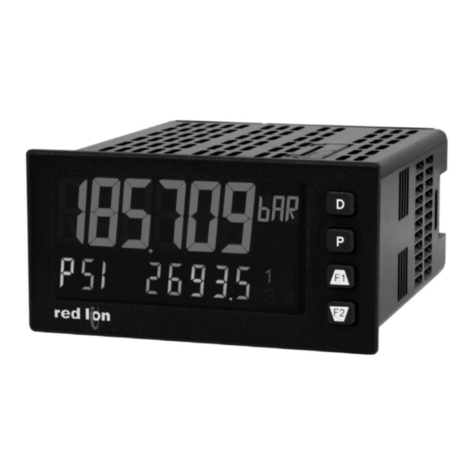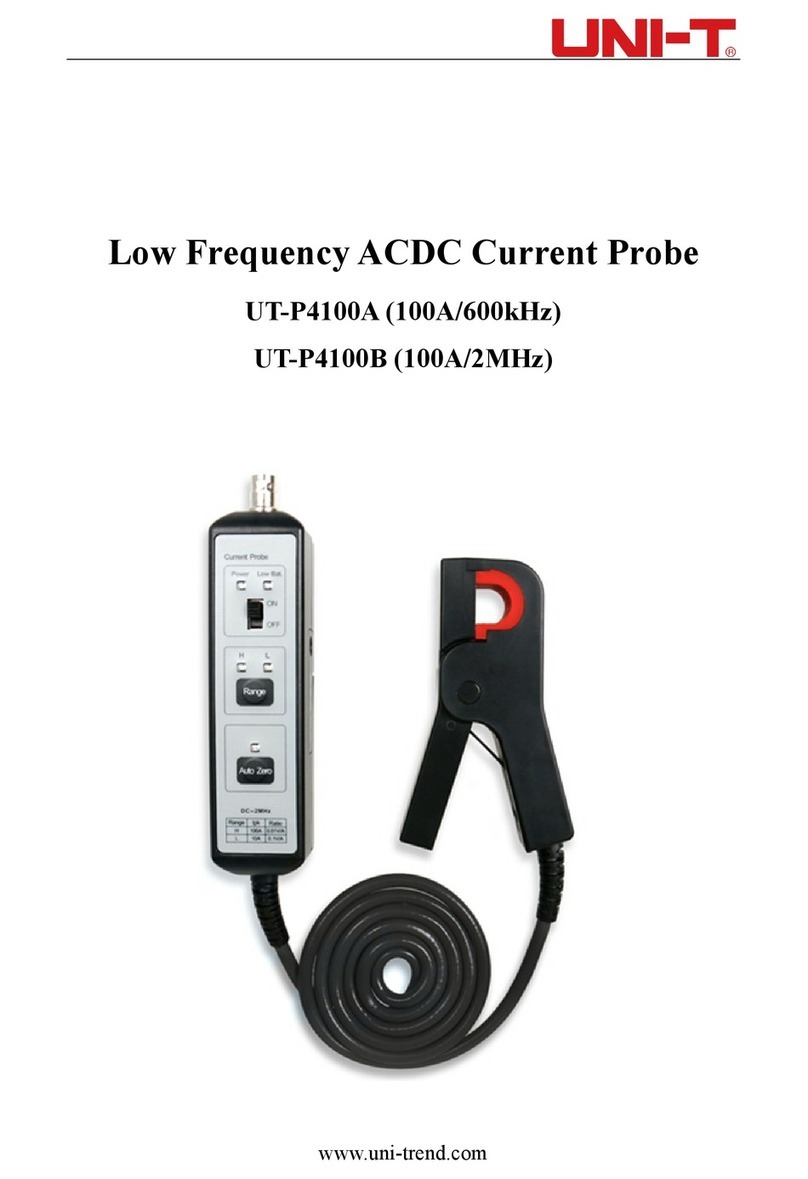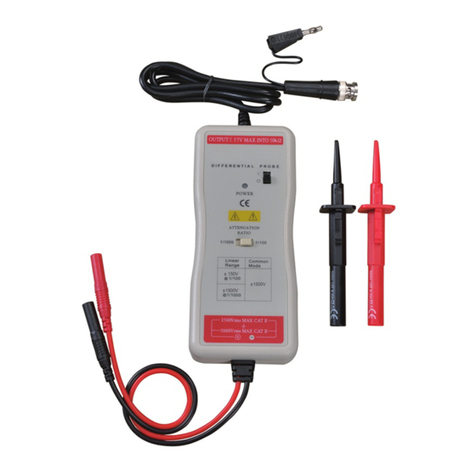Stone Technologies Corporation 4110Dual User manual

StoneTechnologies
Corporation
Model4110DualModeBatteryAnalyzer
TechnicalManual
Contents
HistoryandDesignOverview........................................................................................................................2
TheoryofOperation......................................................................................................................................2
Operation......................................................................................................................................................4
A.ConnectiontotheBattery................................................................................................................4
B.LoadTest...........................................................................................................................................4
C.RecoveryandCooldown.....................................................................................................................5
D.AmpHourDetermination.....................................................................................................................5
E.BatterySizingCalculation......................................................................................................................6
SpecialFeatures............................................................................................................................................6
a.VoltmeterMode...............................................................................................................................6
b.EarlyTerminationofLoadTest.........................................................................................................7
c.EarlyTerminationofAmpHourRecoveryTime...............................................................................7
d.InfraredThermometer......................................................................................................................7
e.BatterySizingCalculationRoutine....................................................................................................8
Specifications................................................................................................................................................8
Electrical................................................................................................................................................8
Mechanical............................................................................................................................................8
GENERAL...............................................................................................................................................9
ReplacementParts........................................................................................................................................9
WarrantyStatement.....................................................................................................................................9

HistoryandDesignOverview
StoneTechnologiesCorporation(STC)hasbeentheleaderinself‐poweredbatteryloadtesters
sincetheintroductionoftheModel1209in1987.ThisproductfilledaneedintheFireand
Securityindustryforasmall,portable,self‐poweredbatteryloadtesterforuseintheFireand
Securityindustry.Thisproductwasaninstantsuccessandbecamethedefactostandardfor
testing12voltstandbybatteriesuptoa12amphourcapacity.In1991,STCintroducedthe
Model612,whichwasessentiallythesameanalyzerwiththeaddedabilitytotest6and12volt
batteries.In2000,theModel612‐Awasintroducedwhichtestedawiderrangeofbattery
sizes.
OvertimeitbecameapparentfromdiscussionswithFireindustrytechnicians,thattheyneeded
atestertocoverthewholerangeofbatterysizesfoundincommercialFiresystems.Testers
availableatthattimewereoutdatedintechnologyandcapability.Soonanewtypeofbattery
testerbecameavailable,usingthemeasuredinternalresistanceofthebatterytodeterminethe
capacityofthebattery.Thesetesterswereone‐size‐fits‐allunitsthattestedonly12volt
batteriesanddidnotchallengethebatterywithanysignificantloadingordischarge.
In2003,STCbegandesignonacombinedloadandinternalresistancebatteryanalyzerand
gatheredperformancecriteriafrommanyofourcustomers.Theresultingdesignisadual
modeanalyzerthatfirstteststhebattery’sresponsetoasignificantcurrentloadingforan
extendedlengthoftimeandthenallowsforarecoveryperiod.Subsequently,itchecksthe
internalresistancetodeterminetheremainingamphourcapacityconsideringthevariablesof
manufacturingconstruction,temperature,andotherphysicalandchemicalparametersthat
affectthetotalcapacityofthebattery.
Additionalusefulfeaturesincludeavoltmeterfunctiontocheckthechargingvoltageanda
mathroutinetocalculatetheminimumsizeofstandbybatteryneededforaparticular
installation.TheModel4110DualModeBatteryAnalyzeristhefirsttestertocombinetwo
typesofbatteryanalysesinasingleinstrumentforthecommercialFireandSecurityindustries.
Thisdeviceiscomputercontrolledwithanalphanumericdisplayforalloperationalprompting
andresults,akeypadfordatainput,andispoweredfromthebatteryundertest.Theunitis
containedinanunbreakablewaterproofcarryingcasewithfoampaddingtoprovidethe
ultimateinprotectionunderthemostextremeconditionsoftransportationandstorage.
TheoryofOperation
TheSTC4110DualModeBatteryAnalyzercombinesloadtestingandinternalresistance
calculationtoprovideacomprehensiveanalysisoftheserviceabilityofasealedleadacid
battery.Itcancheckeither6or12voltbatteriesfrom4AHto110AHon12Vand4AHto60AH

on6V.TheAnalyzerispoweredfromthebatteryundertest,requiresnoexternalpowerand
hasnointernalbatteriestoreplace.
Whenthebatteryfortestisfirstconnected,theSTC4110determinesthevoltage,6or12,and
displaysitonafrontpanelLED.Iftheinputvoltageisoutsidethenormalrange,theunitwill
respondwithawarningmessagetodisconnectimmediately.Thebatteryshouldbe
disconnectedfromallequipmentbyremovingthewiresfromoneoftheterminals.Failureto
removethebatteryfromthecircuitmayresultindamagetothechargingcircuitsincetheload
testingwilltypicallydrawmorecurrentthanthepowersupplycansustain.
Thefirsttestperformedonabatteryisthemeasurementoftheterminalvoltage,through
Kelvinconnections,whilethebatteryissubjectedtoasignificantloadcurrent.Theloadvaries
betweenapproximately2ampsand35amps,dependingonthesizeofthebattery.The
Analyzerpromptsfortheentryoftheamphourrating(basedon20hour
discharge).Additionally,thetemperatureofthebatteryisenteredtoadjusttheterminalvoltage
calibration.Basedonthesizeofbatteryentered,boththetimeoftheloadtestandthe
amountofcurrentissetbytheprocessorandthetestinitiates.Acountdowntimerisdisplayed
showingtheremainingsecondsfortheloadtest.Afundamentalindicationoftheterminal
voltageisgivenonthefrontpanelLEDs:Good,Marginal,Bad.Ifatanytimeduringtheload
testtheterminalvoltagedropsbelowtheacceptableminimum,thetestwillterminateearly
sincethereisnoreasontocontinuetestingabadbattery.
Thesecondtestmeasurestheinternalresistanceofthebattery.Ashortrecoverytimeis
allowedforthebatterychemistrytostabilizeaftertheloadtesting.Thisalsoservesasacool‐
downperiodfortheheatdissipatingdevices.Themeasurementoftheinternalresistanceis
usedtocalculatethetheoreticalremainingamphourcapacityofthebattery.Thebattery
temperatureisusedtoadjusttheresultsgivingtheremainingamphoursatroomtemperature
(78degreesF.).Themeasuredamphourvalueisdisplayedandcomparedtotheratedamp
hourstoindicatethepercentageofcapacityremaining.Itisnotuncommonfornewerbatteries
toshowacapacityabovetheratedvalue.
Attheendofthesecondtest,theoptionispresentedtocalculatethebatterysizeneededfora
particularinstallation.Byenteringthecurrentloadandtimeforthestandbyconditionand
alarmcondition,theSTC4110willcalculatethetotalamphoursofbatterycapacityneeded
withoutanyallowance.YoucanthenaddasafetymarginbasedonyourownCompany
guidelines.Atypicalfirealarmsystemwouldhavea25‐50%marginaddedtothecalculated
value.AtthispointtheAnalyzercanbedisconnectedandthetestingiscomplete.The
batterymustbere‐connectedtothechargingsourceand/orpanelaftertesting.

Operation
ThissectiondetailsthestepsforoperatingtheSTC4110Analyzer.Thisisasummaryofthe
operationdepictedintheflowchartfoundattheendofthismanual.
A. ConnectiontotheBattery
Theanalyzerwilltestboth6voltand12voltsealedleadacidbatteries.Itmustnot
beconnectedtoanyothervoltagelevel.Connectiontoanysourceabove15volts
willresultinanerrormessagedisplaying“VOLTSTOOHIGH,DISC.IMMEDIATELY”.
1. Disconnectonesideofthebatteryfromtheequipmentbeforetestingasthe
loadtestingcurrentmayharmthechargingcircuitsorsetoffalowvoltage
conditiononthealarmsystem.
2. Ifthebatterysystemconsistsofmorethanasinglebattery,theneachmustbe
testedseparately.Thebatteriesdonotneedtobedisconnectedfromeach
otherafterthechargingcircuitisremoved.
3. Theredcoveredclipmustbeconnectedtothepositiveterminal.
4. Theblackcoveredclipmustbeconnectedtothenegativeterminal.
B. LoadTest
1. TheAnalyzerwilldisplayaprompttoentertheamphourratingofthebattery.
Thisisthe20hourdischargeratingforthebattery.Enteravaluebetween4and
110amphours.
2. Theunitwillthenpromptfortheentryofthebatterytemperature.
a. Usethenon‐contactinfraredthermometerincludedwiththe4110to
measurethebatterysurfacetemperature.
b. Enterthetemperaturewithintherangeof1to139degreesFahrenheit.If
thetemperatureis78degreesoraboutroomtemperature,pressingthe
ENTERkeywillassumeavalueof78.It’salwaysbettertomeasurethe
batterytemperaturesincethepowersupplymayraisethetemperatureof
thealarmenclosureandthusthebatterytemperature.
3. PresstheENTERkeytostarttheloadtest.
a. Thedisplaywillshowatimeremainingcounterduringtheloadcycle.
b. Duringthistimethebatterywillbesubjecttoacurrentloading
approximatelyequalto½oftheamphourrating.
c. Onlargebatteriesthisdischargeloadconsumesaconsiderableamountof
energyfromthebatterywhichisconvertedintoheat.RemovetheAnalyzer
fromthecarryingcase.Oneoftheeffectsofthisloadistoremoveany
surfacechargethebatterymayhavedevelopedfromthechargingvoltage.

Thissurfacechargemakesanyvoltagevs.conditiontestunreliable.The
resultisdeterminedattheendoftheloadtest.
d. TheheatsinkonthebackoftheAnalyzerhasalargethermalmassaswellas
significantsurfaceareatodissipatetheheat.Whentestingaverylarge
battery,over60amphours,allowenoughtimebetweentestsfortheheat
sinktocool.Thecoolingtimeafterthemaximumsizebatterytestwillbe
about10minutes.TheAnalyzercantestbatteriesupto20‐30amphours
withoutanyadditionalcoolingtimeotherthanthatprovidedbythetimingof
thetests.
4. Attheendofthecountdownperiod,thedisplayshowsthebasicabilityofthe
batterytosustainacertainterminalvoltageduringtheloadtest.Thistestis
intendedtouncoverdefectsinthebattery’sstructure,internalconnections,and
basicplatecapacityduetochemicalsulfatingorerosion.Abatterythatfailsthis
portionofthetestingispatentlyunusableandshouldbereplacedwithout
furtherevaluation.
C.RecoveryandCooldown
Afterabatteryisdischarged,thechemistryinvolvedwillchangeovertimeasit
returnstoequilibrium.Atthestartoftheamphourdeterminationtesta
countdowntimerisdisplayedthatshowstheremainingtimeallottedforthe
chemicalrecoveryandAnalyzercooldown.Thistimevarieswiththesizeofthe
batterybeingtestedandisnomorethan2minutes.Theamphourdetermination
testselfinitiatesattheendofthisinterval.
D.AmpHourDetermination
Theamphourcapacitythatremainsinanybattery(nottheratedcapacity)isrelated
toamathematicalcalculationbasedonthemeasurementoftheinternalresistance
ofthebatteryanditsmechanicalconstruction.Therearemanyvariablesthataffect
theactualremainingcapacity,includingtemperature,age,physicalconstruction,
chemicaldeteriorationoftheplates,anddepletionofthechemicals.Becauseall
thesefactors,exceptthetemperature,aredifficulttodefinetheymustbecomea
fixedpartofthecalculation.The4110Analyzerusestheaveragevalueforthese
variablesandinputsthetemperatureofthebattery,sinceitistheonlyvariable
easilymeasured.Theresultingcalculationforremainingcapacitywillbeclosetothe
valueresultingfromanactualdischargeata20hourrate.
WhentheENTERbuttonispressedtostartthedynamicamphourdetermination
andaftertherecoveryandcooldowntime,thebatteryissubjecttoaprecise,heavy,
butshortloadwhiletheterminalvoltageismonitored.Thesereadingsarethen

computedtotheremainingempiricalamphoursanddisplayedalongwiththe
percentageofratedcapacity.
Alltestingisnowcompleteandtheresultinginformationcanbeusedtodetermine
theserviceabilityofthebattery.Thealternatingdisplayshowstheresultsand
instructsyoutodisconnectthebatteryorpressENTERtocontinuewithamath
routinetocomparetherequiredstandbycapacitytothemeasuredcapacity.
E.BatterySizingCalculation
Calculatingtherequiredstandbybatteryamphoursmustbeperformedonallalarm
systemstoinsurecoderequirementsaremetandspecifiedminimumstandbytimes
areadequateduringpowerfailconditions.Typicallythetechniciandoesthisby
measuringthestandbycurrentconsumptionduringapowerlossandthealarm
currentdrawduringapowerlosswiththealarmactivated.TheAgencyHaving
Jurisdiction(AHJ),theNFPA,orothergovernmentagency,usuallymandatesthe
amountoftimerequiredforbothstandbyandalarmoperationwithoutACpower.
The4110Analyzerinputsthesevaluesandaccuratelycalculatesthesizeofbattery
neededforaparticularsystem.
WhenyouarepromptedbytheAnalyzer,enterthevaluesforthecurrent(in
milliamps)andtime.Thetesterthencomparestheresultingminimumcapacityto
thecalculatedremainingamphours.Theresultisdisplayedasadequateorreplace.
Therequiredamphoursarealsodisplayedtoverifythesizingofthebattery.A
marginof25‐50%shouldbeallowedwhenusingthisminimumsizetoallowfor
batterydeteriorationandvariationsinchargestate.Thisincludedroutineeliminates
potentialsizingerrorsresultingfrommanualcalculations.
SpecialFeatures
Severalusefulfunctionsareincludedwiththe4110Analyzer.Thesewillassistthe
technicianincompletingabatteryandchargingsystemevaluationaccuratelyand
efficiently.
a. VoltmeterMode
Immediatelyafterconnectiontoabattery,theAnalyzerdisplays“STCDYNAMIC
BATTERYANALYZER”for2seconds.Duringthistime,pressingtheENTERkeywill
placethesysteminvoltmetermodewithadisplayshowingtheterminalvoltage
attheattachmentclips.Themeasuredsourceissubjecttoa200milliamp
loadingastheAnalyzerispoweredentirelybythebatteryundertest.This
voltmetermodeisusefulindeterminingthechargingvoltagewhenthepower

supplyisstillconnectedtothebattery.Whensubjecttothis200milliampload,
asmallerchargingsystemmaynotshowthetruefloatvoltage,especiallyifitisa
seriesresistorregulatedtricklecharger.Onlargersystems,thechargingsystem
islesseffectedbythissmallloadandwillmoreaccuratelyreflectthefloatcharge
voltage.Atroomtemperature,achargevoltageofapproximately13.8Vis
consideredadequatetokeepSLAbatteriessustainednearfullcharge.This
“chargedstate”voltagevariessignificantlywiththetemperatureofthebattery.
Thevariationinidealchargingvoltagewillbemorethan2voltsbetween32and
130degreesFahrenheit.
Afterthevoltagereadingsarecomplete,theAnalyzercanbereturnedtonormal
operationbypressingthepressingtheCANCELkeywithoutdisconnectingthe
clips.
b. EarlyTerminationofLoadTest
Theloadtestmaybeterminatedatanytimeduringthecountdownbypressing
anykey.Thiswillsetthecountdowntimerto1second.Afterthetestresultsare
shown,pressingtheCANCELkeywillrestarttheAnalyzerasifithadjustbeen
connectedtoabattery.Onereasonforearlyterminationmaybetheneedto
performanamphourcalculationwithoutincludingtheloadtest.Thisisnot;
however,therecommendedtestprocedure.
c. EarlyTerminationofAmpHourRecoveryTime
Therecovery/cooldownphaseofthetestmaybeterminatedearlybypressinganykey
duringthecountdown.Thiswillresetthetimerto1second.PressingtheCANCELkey
aftertheamphourcalculationresultsaredisplayedwillrestarttheAnalyzerasifithad
justbeenconnectedtoabattery.Onereasonforearlyterminationistoobtainan
approximateamphourreadingonabatterywhentheAnalyzerheatsinkisstillcool.
Thisisnot;however,therecommendedtestprocedure.
d. InfraredThermometer
Anon‐contactinfraredthermometerisincludedwiththe4110Analyzertodetermine
theactualbatterytemperature.
1.Pullthetriggerswitchtoturnonthedeviceandpointtheredlaserdotatthebattery.
2.Releasethetriggerandreadthetemperatureonthedisplay.Thisvaluewillbe
enteredwhenpromptedatthestartofthebatterytestprocedure.
3.Theinfraredthermometerisbatteryoperatedandhasalowbatterywarningwhich
appearsonthedisplay.Undernormaluse,eventaking5‐10readingsaday,thebattery
willlastformonths.

4.AseparateoperatingmanualforthethermometerisstoredintheAnalyzercarrying
case.Theinfraredthermometeriscalibratedfor“90%darkbody”whichmeansthatitis
mostaccuratewhenreadingfromadarkorblackbatterycase.Theerrorfromreadinga
grayorothercolorbatteryissmallandwillnotnoticeablyeffectthetestresults.
e. BatterySizingCalculationRoutine
ThebatterysizingcalculationisstartedbypressingtheCANCELkeyduringtheinitialtwo
secondswhentheAnalyzerdisplayshowsthe“STCDYNAMICBATTERYTESTER”banner.
TheAnalyzercanberebootedatmanypointsintheoperationbypressingtheCANCEL
keytoreturntothisbanner.
Acalculationoftheneededstandbybatteryamphoursmustbeperformedonallalarm
systemstoinsurethatcoderequirementsandminimumstandbytimeswillbemet
underpowerfailconditions.Typicallyyoudothismanuallybymeasuringthestandby
currentconsumptionduringapowerlossandthealarmcurrentdrawduringapower
losswiththealarmactivated.TheAgencyHavingJurisdiction(AHJ),theNFPA,orother
governmentagency,usuallymandatestheamountoftimerequired.The4110Analyzer
inputsthesevaluesandaccuratelycalculatesthebatterysizeneededforaparticular
system.
Thevaluesforthecurrent(inmilliamps)andtimeareenteredaspromptedandthe
resultingminimumcapacityisdisplayedtoverifythesizingofthebattery.Amargin
shouldbeaddedwhenusingthisminimumsizetoallowforbatterydeteriorationand
variationsinchargestate.Thisincludedroutineeliminatespotentialsizingerrors
resultingfrommanualcalculations.
Specifications
Electrical
InputVoltagefrombattery:5‐15VDC,Auto‐selectsfor6Vor12V.
TestingRange:4to110Amphour,12V.4to60Amphour,6V.
LoadCurrent:aprox.200ma.duringstatictest,2‐30Ampsmax.duringdynamictest.Actualloadis
approximately1/2A.H.rating
Dynamicloadtimeinterval:50‐100seconds.Aproximately120secondsmax.for
Amphourdetermination.
Mechanical
Size:11.5”wideX11”deepX5”high.
Weight:7.7lb.analyzer,includingtestleads.16.7lbs.completeunitincase.(Shippingweight:18lb.).

InputConnection:MilitarySpec97SeriesConnectorset.
Operatingtemperature:32to140degreesF.(0to50degreesC.).90%Relativehumidity.Over
temperatureshutdownat140degreesF.
BatteryTemperatureInput:Non‐contactinfraredthermometerforreading;keypadentryfor
temperature.
Testleads:48inch,highflexinstrumentationcable,Stranded,copperconductorswithsoldered
connections.Heavydutycopperalligatorclipswithcolorcodedvinylinsulatingboots.Militarygrade
connectorassemblywithstrainreliefboot.
GENERAL
Displays:TwoLinevacuumflorescentforpromptsanddatadisplay.FiveLEDsforbatteryvoltageand
loadtestresults.
DataInput:12buttonkeypadwithvacuumflorescentdisplayforAmphours,prompts,battery
temperature,anddata.
Warranty:Twoyearspartsandlabor.(Seeseparatewarrantystatementforcompletedetails.)
ReplacementParts
Therearenouserserviceablepartsinsidethe4110Case.Anyrepairsotherthanreplacementofthetest
cableassemblymustbemadebySTC.AReturnMaterialsAuthorizationnumbermustbeobtained
beforereturningtheanalyzerforrepair.
Thefollowingreplacementpartscanbeorderedfromyourdistributor:
CarryingCasewithcustomfoaminteriorST3040
TestCableAssemblyST0307QuickReferenceCardST
QuickReferencecard
Non‐contactIRThermometerSTIRT
TechnicalManualSTTechman4110
Call800‐440‐1234fororderinginformation.
WarrantyStatement
StoneTechnologiesCorporation
TwoYearLimitedWarranty

1.Whatiscovered:ThiswarrantycoversdefectsinmaterialsandworkmanshipinthisStone
Technologiesequipment(“product”)withtheexceptionsnotedbelow.
2.Forhowlong:Thiswarrantylastsforaperiodoftwo(2)yearsfromthedateyouboughttheProduct
fromusorfromoneofourauthorizeddistributors.
3.Whatwewilldo:Wewillrepairorreplaceatouroption,anyProductthatprovestobedefectivein
materialsandworkmanshipduringthetwo(2)yearwarranty.Thisisyoursoleandexclusiveremedyfor
anybreachofwarranty.
4.Whatisnotcovered:ThiswarrantydoesnotincludeanyProduct’stestleads,orexternalaccessories.
ItdoesnotextendtoanyProductwhichhasbeendamagedasaresultofaccident,misuse,abuse(such
asattemptingtotestotherthantheintendedbatteries,failuretofollowtheoperatinginstructionsthat
areprovidedbyus,actsofGodorothercontingenciesbeyondourcontrol),orastheresultofserviceor
modificationbyanyoneotherthanusorourauthorizedrepairfacilities.Anyimpliedwarrantiesof
merchantabilityorfitnessforaparticularpurpose,areexpresslydenied.SomeStatesdonotallow
limitationsonhowlonganimpliedwarrantylasts,sotheabovelimitmaynotapplytoyou.Weshallnot
inanycasebeliableforspecial,incidental,consequential,orindirectexpenses,lostprofits,orother
similardamagesarisingfromanybreachofthesewarrantiesevenifwehavebeenadvisedofthe
possibilityofsuchdamages.SomeStatesdonotallowtheexclusionorlimitationofincidentalor
consequentialdamages,sotheabovelimitationmaynotapplytoyou.Innocaseshallourliability
exceedthepurchasepricethatyoupaidfortheproduct.
Table of contents
